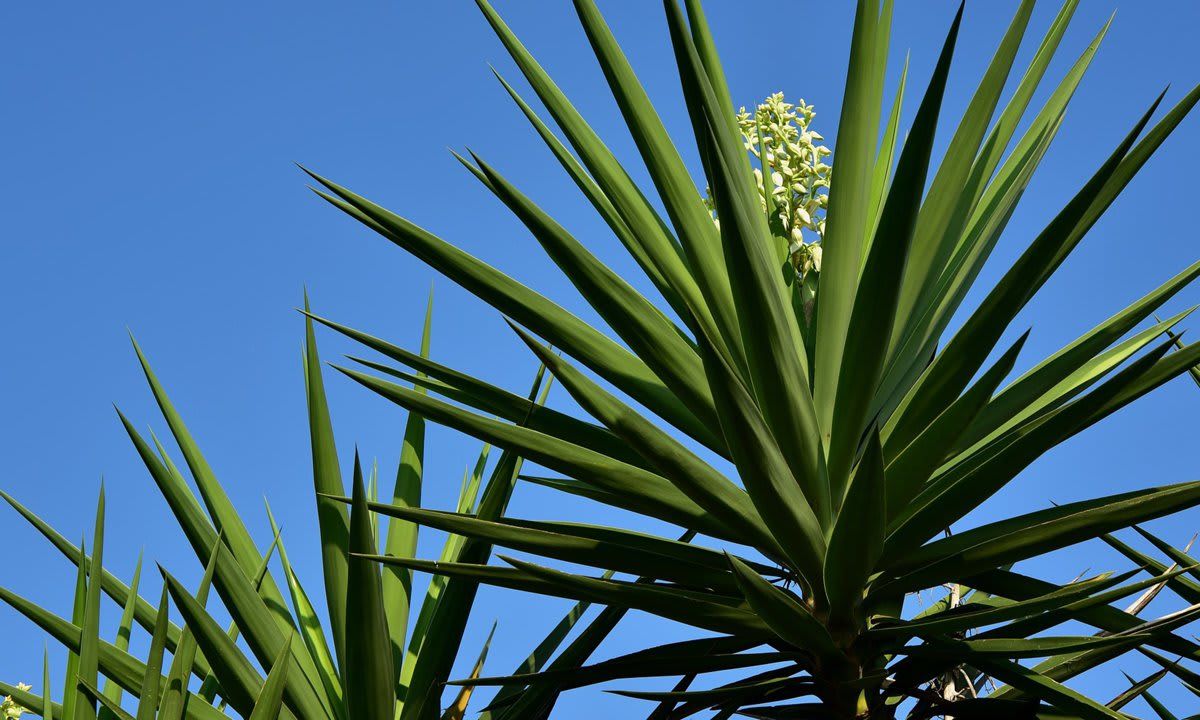If you like plants, you shouldn’t miss the opportunity of having a yucca plant. It is an exotic beautiful plant that under optimal conditions, is extremely easy to grow and care for, both indoors and outdoors. This is a great houseplant that won’t require much attention from you and it will look fantastic!

Variety of Yuca Plants
There are endless varieties of Yucca plants, all belonging to the Agave family which are known for being easy to grow and care, wether in a pot or in a garden. There are more than 50 varieties, and one of the most common is the Spineless Yucca / Stick Yucca (Yucca Elephantipes). It has one or more straight trunks and very showy, elongated sword-shaped leaves.
Where do you plant it?
If you live in a place with a warm climate, you can choose where you want to plant the yucca. It will be wonderful in the garden, in a sunny corner, although in very hot areas it will prefer to be in semi-shade. To grow it indoors and grow it and keep it happy, it is best to place it in a bright room without direct sunlight, as that could weaken it. However, if you see that the leaves of your yucca are turning yellow, it means that it is not receiving enough light.
The size of the Yucca plant
Yucca is a plant that grows a lot, depending on its living conditions. If you have it indoors, in a pot, it can grow from 6-8 feet tall. For those planted in the garden, they can easily reach 26 feet tall, of course, provided that they are being cared for correctly.
The Yucca Flowers
This plant has very special beautiful flowers that consist of clusters of bell-shaped flowers of a soft cream color that hang loosely of its branches. The bad news is that it is not easy for yucca flowers to flourish and bloom indoors. If you have the plant in the garden and the weather conditions are optimal, there is a better chance that you can see its magnificent flowers.
Its ideal weather/temperature
In general, yucca is a very resistant plant that supports a wide range of temperatures, although it prefers to be in weather of between 60°F to 100°F. However, note that it does not tolerate extreme cold as it is a plant native to hot and humid climates. If you have it outside the home, in your garden, it will not withstand strong ice and frosts (anything below -25°F). If you live in a cold place, it is worth growing it indoors in a pot. Put it in a cool room away from radiators and other heating systems.
Do not over water it
If there’s one thing that really hurts a yucca plant it’s over-watering it. Please don’t go overboard as an excess of water can kill the plant in a short time. You must be very careful when watering it, check that the soil in ground or the pot is completely dry. This is the best indicator to know if you have to add water again. During the summer you can water it once a week, and in winter one watering every 20 days will be enough.
Bonus tip: spray the yucca leaves from time to time to provide it with a bit of moisture, it will make your plant happy.
Feed it extra nutrients
Adding some extra nutrients will enrich the soil for your plant, especially during the summer and even more so if you grow it in a pot. You can do this by diluting liquid fertilizer for green indoor plants in the irrigation water. Do it every two weeks without going over the recommended dose. It‘s even better to add less, as too much compost or fertilizers can burn the plant.
Do you have to repot it after some time?
During the plant’s first 3-4 years of life you will have to repot it to larger pot annually to allow it to grow properly to its full size. Choose a pot that is deep enough. When it has reached a good size, you will no longer nee to repot it every year.
Can you propagate the Yucca plant?
You can propagate and multiply it by using its cuttings. Do this in the spring by cutting stems about 5-7 inches long and dip them into a pot with peat moss and mulch. Before that, you can soak the base of the cuttings with fertilizer. Make sure that the soil is moist for a few weeks so that the plant takes root in the ground.
Pests and diseases that affect Yucca
If you have decided to grow yucca, you must be vigilant against possible pests and diseases that may affect it. The most common pest is the cochineal, an insect that usually attacks the trunk and leaves. The most effective way to remove it is to do it manually with a cotton ball soaked in methanol. Other pests that can affect your yucca are aphids and snails. As for diseases, it is common to suffer from botrytis, a disease caused by a fungus that produces gray mold and rots the base of the stem. It is usually caused by excessive watering.
A final note for pet owners: Be cautious as parts of the yucca plant can be toxic to cats and dogs if ingested in large amounts.
,type=downsize)